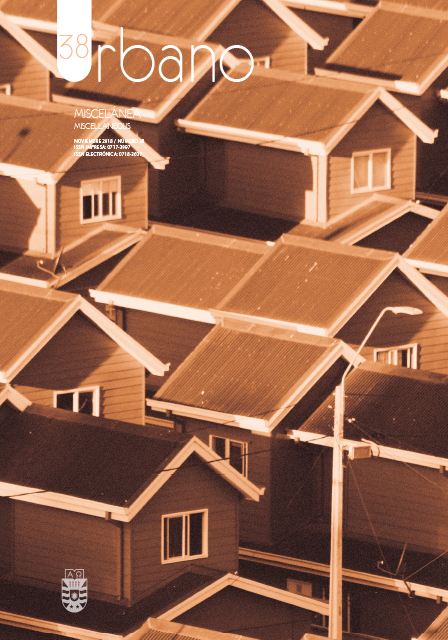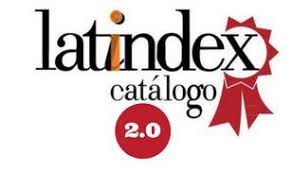Mobility resources and urban accessibility in municipalities in the south of the Guadalajara metropolitan area, México
DOI:
https://doi.org/10.22320/07183607.2018.21.38.04Keywords:
transportation, mobility resources, accessibility, urban services, urban fringeAbstract
This paper contributes to establishing the relationship between the availability of mobility resources and the way in which residents of peripheral municipalities of metropolises access urban services and significant places in the territory, in the context of the splintered urbanism and urban sprawl that characterizes many Latin-American cities. Using data from a mobility survey conducted in the municipalities in the south of the Guadalajara Metropolitan Area, an analytical typology of households was created according to their possession of mobility resources. This typology was used to analyze households ́ access conditions to shops, jobs, schools, and hospitals. It is worthy to note the diversity of situations lived: there are households that have a great deal of mobility resources and can use large tracts of the urban territory to search for convenient urban resources, and other groups practically without mobility resources, that mainly concentrate on exploiting the most basic urban goods and services in the immediate surroundings.
Downloads
References
AVELLANEDA, Pau y LAZO, Alejandra. Aproximación a la movilidad cotidiana 56 en la periferia pobre de dos ciudades latinoamericanas. Los casos de Lima y Santiago de Chile, Revista Transporte y Territorio, 2011, n° 4, pp. 47-58.
AYSHA, Faiz. Transportation and the Urban Poor, Institute of Transportation Engineers Journal, 2011, vol. 81, n° 12, pp. 40-43.
BAKKER, Karen. Privatizing Water. Governance Failure and the World’s Urban Water Crisis. London: Cornell University Press, 2010.
BAUN-SNOW, Nathaniel. Changes in Transportation Infrastructure and Commuting Patterns in US Metropolitan Areas, 1960-2000, American Economic Review [en línea], 2010 vol. 100, pp. 378-382. DOI: https://doi.org/10.1257/ aer.100.2.378
DAVIS, Mike. Planet of Slums. London: Verso, 2006.
DESAI, Renu; MCFARLANE, Colin y GRAHAM, Stephen. The Politics of Open Defecation. Informality, Body and Infrastructure in Mumbai, Antipode, 2015, vol. 47, n° 1, pp. 98-120.
DÍAZ OLVERA, Lourdes; PLAT, Didier y POCHET, Pascal. The Puzzle of Mobility and Access to the City in Sub-Saharan Africa, Journal of Transport Geography, 2013, vol. 32, pp. 56-64.
ENRIGHT, Theresa Erin. Mass Transportation in the Neoliberal City: The Mobilizing Myths of the Grand Paris Express, Environment and Planning A, 2013, vol. 45, pp. 797-813.
EVANS, Peter. Looking for Agents of Urban Livability in a Globalized Political Economy. En: EVANS, Peter (ed.). Livable Cities? Urban Struggles for Livelihood and Sustainability. Berkeley: University of California Press, 2002, pp. 1-30.
FADDA, Giulietta; JIRÓN Paola y ALLEN, Adriana. Views from de Urban Fringe. Habitat, Quality of Life and Gender in Santiago, Chile. En: JENKS, Mike y BURGESS, Rod (eds.). Compact Cities. Sustainable Urban Forms for Developing Countries. London: Spon Press, 2000, pp. 167-182.
FARBER, Steven; MORANG, Melinda y WIDENER, Michael. Temporal Variability in Transit-Based Accessibility to Supermarkets, Applied Geography, 2014, vol. 45, pp. 149-159.
GARCÍA PERALTA, Beatriz. Social Housing in Mexico. The Commodification and Peripheral Growth of the City. En: KAMINER, Tahl; ROBLES-DURÁN, Miguel y SOHN, Heidi (eds.). Urban Assymetries. Studies and Projects on Neoliberal Urbanization. Rotterdam: 010 Publishers, 2011, pp. 98-111.
GARLAN, Allison. Poverty and the Periphery. Cities in Latin America and the Former Soviet Union, Georgetown Journal of International Affairs, 2007, vol. 8, no 2, pp. 5-11.
GOUGH, Jamie y EISENSCHITZ, Aram. Spaces of Social Exclusion. London: Routledge, 2006.
GRAHAM, Stephen y MARVIN, Simon. Splintering Urbanism. Networked Infraestructures, Technological Mobilities and the Urban Condition. London: Routledge, 2002.
GRANT, Murray. Ensuring Access and Participation in the Liverpool City Region. En: LUCAS, Karen (ed.). Running on Empty. Transport, Social Exclusion and Environmental Justice. Bristol: Policy Press, 2004, pp. 55-68.
GRIECO, Margaret. Social Sustainability and Urban Mobility: Shifting to a Social Responsible Pro-Poor Perspective, Social Responsibility Journal, 2015, vol. 11, n° 1, pp. 82-97.
GUTIÉRREZ, Andrea y KRALICH, Susana. De movilidades e inmovilidades urbanas, Revista Transporte y Territorio, 2011, vol. 4, pp. 1-9.
HERNÁNDEZ, Diego y ROSSEL, Cecilia. Inequality and Access to Social Services in Latin America: Space-Time Constraints of Child Health Checkups and Pre- Natal Care in Montevideo. Journal of Transport Geography, 2015, vol. 44, pp. 24-32.
HEYNEN, Nik. Justice of Eating in the City. The Political Ecology of Urban Hunger. En: HEYNEN, Nik; KAIKA, Maria y SWYNGEDOUW, Erick (eds.). In the Nature of Cities. Urban Political Ecology and the Politics of Urban Metabolism London: Routledge, 2006, pp. 124-137.
HOLCOMBE, Randall y WILLIAMS, DeEdgra. Urban Sprawl and Transportation Externatities, Review of Regional Studies, 2010, vol. 40, no 3, pp. 257-273.
INSTITUTO NACIONAL DE ESTADÍSTICA Y GEOGRAFÍA, Censo de Población y Vivienda 2010, [en línea], 2015. https://www.inegi.org.mx/programas/ ccpv/2010/
INSTITUTO NACIONAL DE ESTADÍSTICA Y GEOGRAFÍA, Encuesta Intercensal 2015, [en línea], 2016, https://www.inegi.org.mx/proyectos/enchogares/ especiales/intercensal/
JIRÓN, Paola. Mobility on the Move. Examining Urban Daily Mobility Practices in Santiago de Chile. London: London School of Economics and Political Science, 2008.
JOUFFE, Ives. Las clases socioterritoriales entre movilidad metropolitana y repliegue barrial. ¿Tienen los pobladores pobres una movilidad urbana de clase? Revista Transporte y Territorio, 2011, vol. 4, pp. 84-117.
JONES, Craig E. y LEY, David. Transit-Oriented Development and Gentrification along Metro Vancouver’s Low-Income Sky Train Corridor, The Canadian Geographer, 2015, vol. 60, n° 1, pp. 9-22.
KAUFMANN, Vincent; BERGMAN, Manfred Max y JOYE, Dominique. Motility: Mobility as Capital, International Journal of Urban and Regional Resarch [en línea], 2004, vol. 28, no 4, pp. 745-756. DOI: https://doi.org/10.1111/j.0309- 1317.2004.00549.x
KELLERMAN, Aharon. Personal Mobilities. London: Routledge, 2006.
LAZO, Alejandra y CALDERÓN, Rodrigo. Los anclajes en la proximidad y la movilidad cotidiana. Retrato de tres barrios de la ciudad de Santiago de Chile, EURE, 2014, vol. 40, no 141, pp. 121-140.
MANAUGH, Kevin; MIRANDA-MORENO, Luis y EL-GENEIDY, Ahmed. The Effect of Neighbourhood Characteristics, Accesibility, Home-Work Location, and Demographics on Commuting Distances, Transportation [en línea], 2010, vol. 37, pp. 627-646. DOI: https://doi.org/10.1007/s11116-010-9275-z
MARICATO, Erminia. Vulnerability and Risk in the Metropolis of the Periphery. Everyday Life in Brazil’s Cities, Progressive Planning, 2013, vol.196, pp. 28-30.
MASOUMI, Houshmand. Urban-Sprawl in Mid-Sized Cities of Mena, Evidence from Yazd and Kashan in Central Iran, Management Research and Practice, 2014, vol. 6, no 2, pp. 25-41.
MCFARLANE, Colin y RUTHERFORD, Jonathan. Political Infrastructures. Experiencing the Fabric of the City.
International Journal of Urban and Regional Resarch [en línea], 2008, vol. 32, no 2, pp. 373-374. DOI: https://doi.org/10.1111/j.1468-2427.2008.00792.x
MOAVENZADEH, Fred y MARKOW, Michael. Moving Millions. Transport Strategies for Sustainable Development in Megacities. Dordrecht: Springer, 2007.
NÓVAK, Jakub y SÝKORA, Ludek. A City in Motion. Time-Space Activity and Mobility Patterns of Suburban Inhabitants and the Structuration of the Spatial Organization of the Prague Metropolitan Area, Geografiska Annaler, Series B [en línea], 2007, vol. 89, no 2, pp.147-168. DOI: https://doi.org/10.1111/j.1468- 0467.2007.00245.x
OHNMACHT, Timo; MAKSIM, Hanja y BERGMAN, Manfred Max. Mobilities and Inequality. Farnham: Ashgate, 2009.
PEZZOLI, Keith. Sustainability, Livelihood, and Community Mobilization in the Ajusco Ecological Reserve. En: EVANS, Peter (ed.). Livable Cities? Urban Struggles for Livelihood and Sustainability. Berkeley: University of California Press, 2002, pp. 195-221.
RODRÍGUEZ VIGNOLI, Jorge. Movilidad cotidiana, desigualdad social y residencial en cuatro metrópolis de América Latina, EURE [en línea], 2008, vol. 34, no 103, pp., 49-71. DOI: https://doi.org/10.4067/s0250-71612008000300003
ROY, Ananya. Slumdog Cities. Rethinking Subaltern Urbanism, International Journal of Urban and Regional Research [en línea], 2008, vol. 35, no 2, pp. 223- 238. DOI: https://doi.org/10.1111/j.1468-2427.2011.01051.x
SABATINI, Francisco y BRAIN, Isabel. La segregación, los guetos y la integración social urbana: mitos y claves. EURE [en línea], 2008, vol. 34, no 103, pp. 5-26. DOI: https://doi.org/10.4067/s0250-71612008000300001
SERULLE, Nayel Urena; Cirillo, Cinzia. Transportations needs of low income population: a policy analysis for the Washington D.C. metropolitan region. Public Transport [en línea], 2016, vol. 8, pp. 103-123, DOI: https://doi.org/10.1007/ s12469-015-0119-2
SIEMIATYCKI, Matti. Message in a Metro. Building Urban Rail Infrastructure and Image in Delhi, India, International Journal of Urban and Regional Research [en línea], 2006, vol. 30, no 2, pp., 277-292. DOI: https://doi.org/10.1111/j.1468- 2427.2006.00664.x
SIMS, Benjamin. Disoriented City. Infrastructure, Social Order and the Police Response to Hurricane Katrina. En: GRAHAM, Stephen (ed.). Disrupted Cities. When Infrastructure Fails. London: Routledge, 2010, pp. 41-54.
SOCIAL EXCLUSION UNIT. Making the Connections. Final Report on Transport and Social Exclusion. London: Office of the Deputy Prime Minister, 2002.
VILALTA, Carlos. Fear of Crime in Public Transport. Research in Mexico City. Crime Prevention and Community Safety [en línea], 2011, vol. 13, no 3, pp. 171-186. DOI: https://doi.org/10.1057/cpcs.2011.4
WANG, Haoluan; TAO, Ling; QIU, Feng y LU, Wei. The Role of Socio-Economic Status and Spatial Effects on Fresh Food Access. Two Case Studies in Canada, Applied Geography, 2016, vol. 66, pp. 27-38.
YOUNG, Douglas y KEIL, Roger. Locating the Urban In-Between. Tracking the Urban Politics of Infrastructure in Toronto, International Journal of Urban and Regional Research [en línea], 2014, vol. 38, no 5, pp. 1589-1608. DOI: https://doi. org/10.1111/1468-2427.12146
Published
How to Cite
Issue
Section
License
The content of articles which are published in each edition of Habitat Sustentable, is the exclusive responsibility of the author(s) and does not necessarily represent the thinking or compromise the opinion of University of the Bio-Bio.
The author(s) conserve their copyright and guarantee to the journal, the right of first publication of their work. This will simultaneously be subject to the Creative Commons Recognition License CC BY-SA, which allows others to share-copy, transform or create new materials from this work for non-commercial purposes, as long as they recognize authorship and the first publication in this journal, and its new creations are under a license with the same terms.![]()























